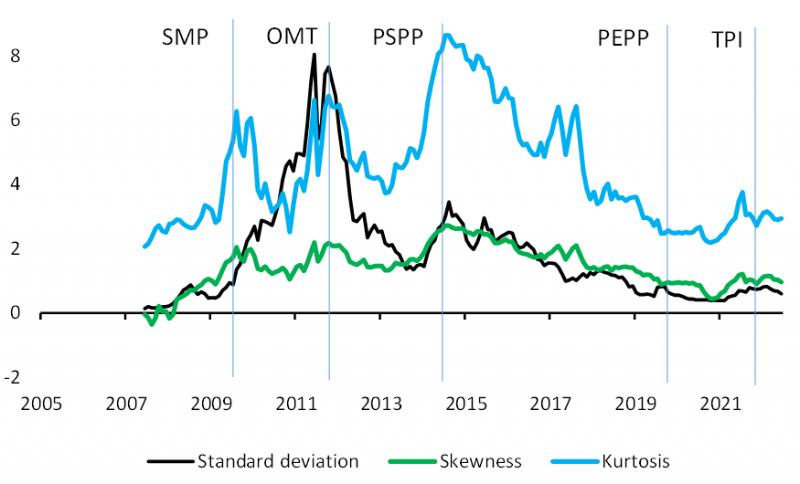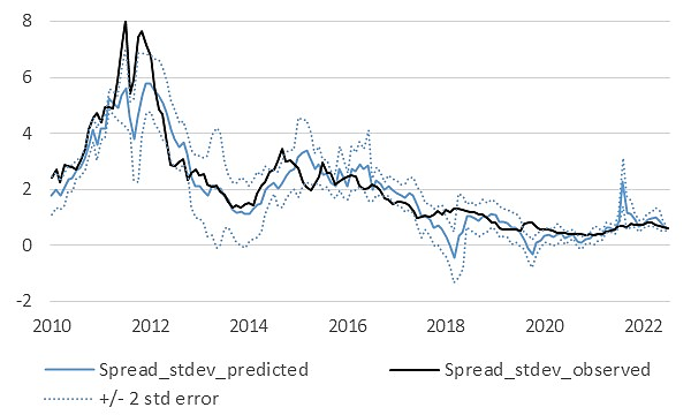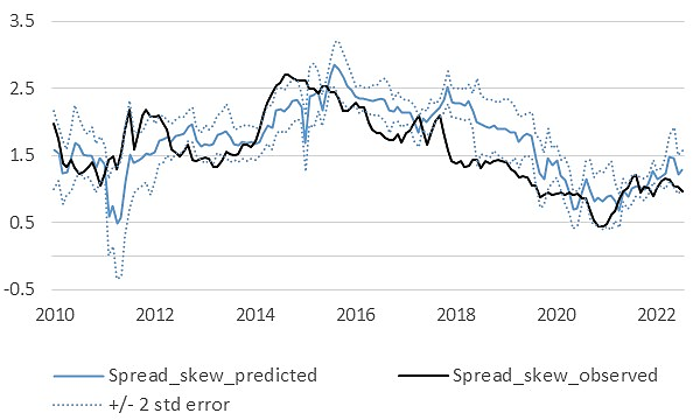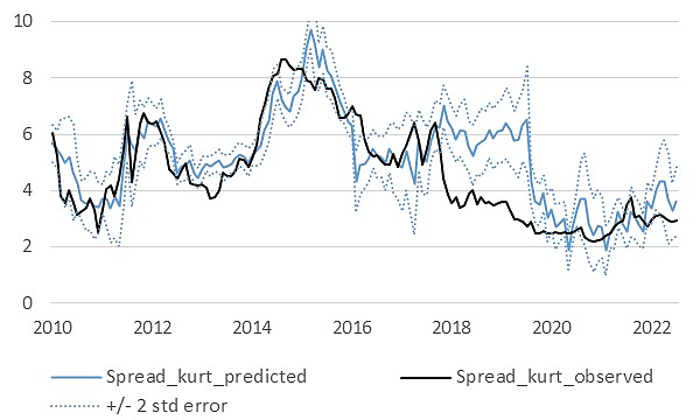References
Baele, L, A. Ferrando, P. Hördahl, E. Krylova and C. Monnet (2004), Measuring financial integration in the euro area, ECB Occasional Paper, 14.
Broeders, D., L. de Haan and J. W. van den End (2023), How QE changes the nature of sovereign risk, Journal of International Money and Finance, forthcoming.
Ceci, D. and M. Pericoli (2022), Sovereign spreads and economic fundamentals: an econometric analysis, Occasional Paper, 713, Bank of Italy.
De Grauwe, P. and Y. Ji (2022), The fragility of the Eurozone: has it disappeared?, Journal of International Money and Finance, 120, 1-9
De Santis, R., (2018), Unobservable country bond premia and fragmentation, Journal of International Money and Finance, 82, 1-25.
Eijffinger, S. C. W. and M. Pieterse-Bloem (2022), Eurozone Government Bond Spreads: A Tale of Different ECB Policy Regimes, CEPR Discussion Paper, 17533.
Eisenschmidt, J., D. Kedan and R. Tietz (2018), Measuring fragmentation in the euro area unsecured overnight interbank money market: a monetary policy transmission approach, ECB Economic Bulletin, 5/2018.
Garcia-de-Andoain, C., P. Hoffmann and S. Manganelli (2014), Fragmentation in the euro overnight unsecured money market, ECB Working Paper, 1755.
Horny, G., S. Manganelli and B. Mojon (2016), Measuring Financial Fragmentation in the Euro Area Corporate Bond Market, Banque de France Working Paper, 582.
Kakes, J. and J.W. van den End (2023), Identifying financial fragmentation: do sovereign spreads in the EMU reflect differences in fundamentals?, DNB Working Paper No. 778.
Mayordomo, S., M. Abascal, T. Alonso and M. Rodriguez-Moreno (2015), Fragmentation in the European interbank market: Measures, determinants, and policy solutions, Journal of Financial Stability, 16, 1-12.
Zaghini, A. (2016), Fragmentation and heterogeneity in the euro-area corporate bond market: Back to normal?, CFS Working Paper, 530.








